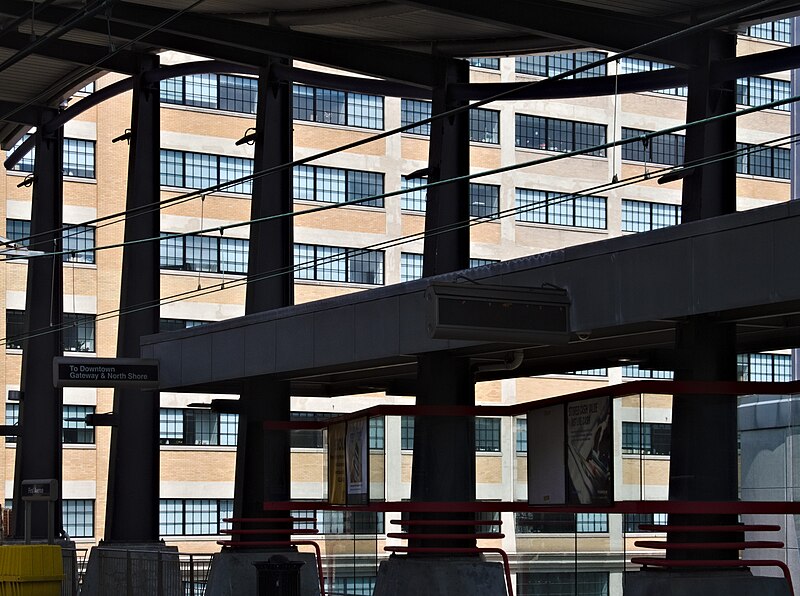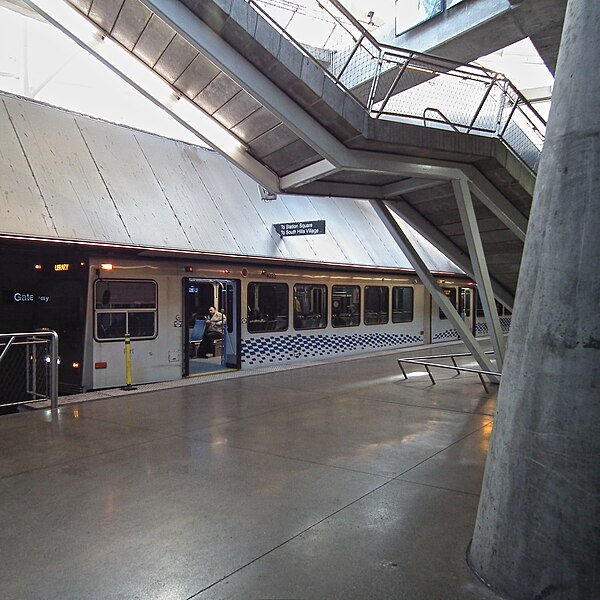
Some pictures of Steel Plaza taken on a weekend when it was momentarily almost empty. The largest and most complex of our subway stations, Steel Plaza was built as a transfer station between the main line and a short spur to Penn Station—which, although it is not in regular service, is still kept up for special events and emergency detours. In the picture above, the Penn Station spur is in the foreground.

Here we see the two lines converging toward their junction in the tunnel beyond the station.


To add to the complexity, the station was designed to take the old PCC cars as well, which had only street-level doors. These lower-level platforms have been out of use since 1999, when the last PCC cars were retired, but the space isn’t useful for anything else, so the platforms are still there.

Comments























